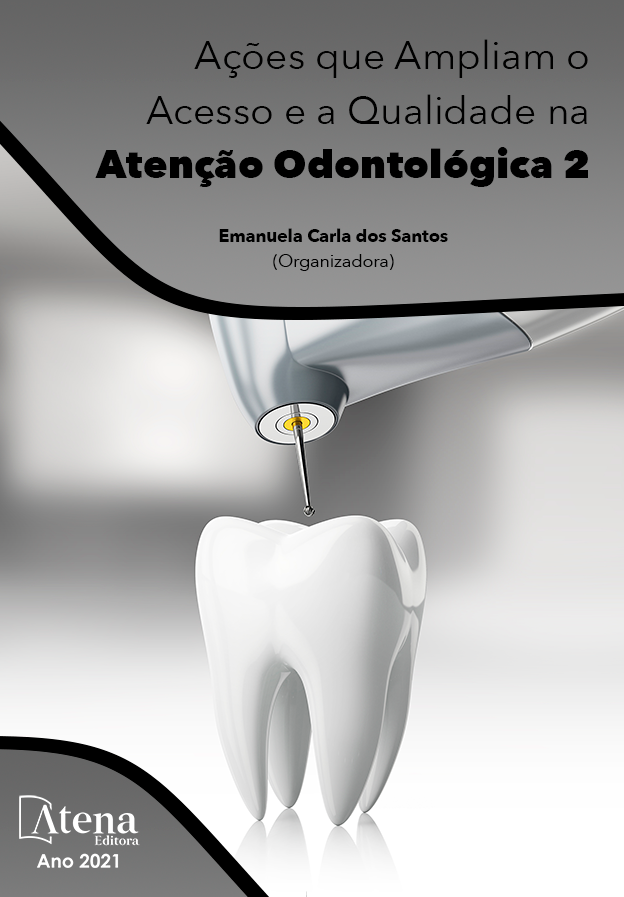
POTENCIAL HIDROFÍLICO EM BLOCOS DE BIOMATERIAL DE ORIGEM BOVINA
O objetivo deste trabalho foi verificar a capacidade de hidrofilia de blocos de biomaterial de origem bovina, quando expostos a um corante vermelho, em três situações diferentes, bem como uma revisão literária sobre diversos tipos de matérias, empregados como substitutos ósseos em cirurgias de enxertos na área Odontológica. Os corpos de prova foram distribuídos em três grupos, sendo: grupo I, blocos de biomaterial de origem bovina secos; grupo II, blocos de biomaterial de origem bovina, imersos em solução de estéril por cinco minutos; grupo III, blocos de biomaterial de origem bovina, imersos em solução estéril por dez minutos, sendo todos os grupos expostos a mesma quantidade de corante vermelho comestível na cor vermelha, com a finalidade de melhor visualização do potencial hidrofílico de cada um.Os corpos de prova do grupo I apresentaram um discreto manchamento pelo corante, sendo que muito pouca difusão deste líquido pelo interior do bloco, restringindo-se somente à área de contato com o líquido, o segundo grupo apresentou uma melhor perfusão do corante por quase todo o corpo no bloco, já o grupo III apresentou quase que um total manchamento de todo o seu interior pelo corante. Pelos resultados obtidos, podemos concluir que o potencias de molhabilidade dos blocos de biomaterial de origem bovina apresentam um melhor resultado quando imersos em solução estéril por um tempo de dez minutos, sendo necessária a repetição de tal experimento com outras marcas de biomateriais, a fim de as comparar e verificar possíveis diferenças da capacidade hidrofílica entre elas.
POTENCIAL HIDROFÍLICO EM BLOCOS DE BIOMATERIAL DE ORIGEM BOVINA
-
DOI: 10.22533/at.ed.20221300324
-
Palavras-chave: biomaterial, enxerto ósseos, hidrofilia
-
Keywords: biomaterial, bone draft, hydrophilia
-
Abstract:
The objective of this work was to verify the hydrophilicity capacity of blocks of biomaterial of bovine origin, when exposed to a red dye, in three different situations, as well as a literary review on different types of materials, used as bone substitutes in grafting surgeries in Brazil. Dental area. The specimens were divided into three groups, being: group I, blocks of dry biomaterial of bovine origin; group II, blocks of biomaterial of bovine origin, immersed in sterile solution for five minutes; group III, blocks of biomaterial of bovine origin, immersed in sterile solution for ten minutes, with all groups exposed to the same amount of edible red dye in red color, in order to better visualize the hydrophilic potential of each one. group I test showed a slight staining by the dye, with very little diffusion of this liquid inside the block, being restricted only to the area of contact with the liquid, the second group showed a better perfusion of the dye by almost the entire body in the group III, on the other hand, group III showed almost a total staining of its entire interior by the dye. From the results obtained, we can conclude that the wettability potential of the biomaterial blocks of bovine origin present a better result when immersed in sterile solution for a period of ten minutes, being necessary the repetition of such experiment with other brands of biomaterials, in order to compare them and check for possible differences in hydrophilic capacity between them.
-
Número de páginas: 7
- SERGIO CHARIFKER RIBEIRO MARTINS
- LEANDRO LÉCIO LIMA DE SOUZA
- LORRANY MARTINS DE OLIVEIRA
- CLARA BEATRIZ SANTIAGO RIBEIRO
- VALMON FRANCISCO DE MATOS JUNIOR
- JOSÉ RICARDO MARIANO


